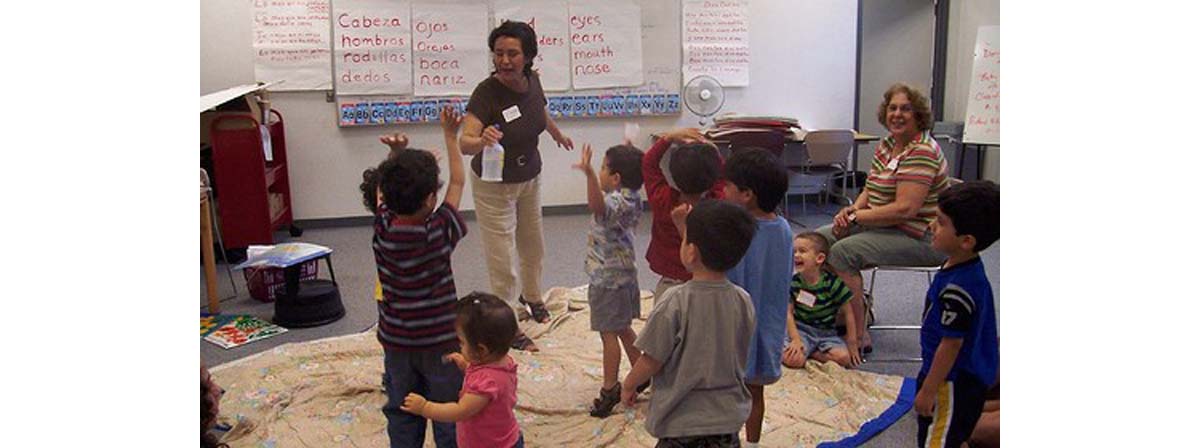Table of Contents
We can distinguish between two types of bilingualism: simultaneous bilingualism and sequential bilingualism. Simultaneous bilingualism happens when a young child is simultaneously exposed to two languages (in roughly equal amounts), and he acquires these two languages alongside each other. Sequential bilingualism happens when a child first acquires one language, and then another.

Let's imagine that a multilingual couple is expecting their first child. They're already committed to raising that child, and any subsequent children, with two languages. The first decision they are going to have to make is how they are going to go about it. Many choices follow within that same category, but the first is whether they are choosing simultaneous or sequential bilingualism.
Both options have advantages and disadvantages. I have two children and have had the opportunity to witness how both options panned out within my own family, since we're a trilingual family. In our case, the first two languages were acquired simultaneously, while the third was acquired a few years into the kids' development.
In most cases, you will find that practical considerations naturally determine what approach you take. If, for example, you move to a new country when your child is a toddler, sequential bilingualism is the natural result. If you live with in-laws who speak a different primary language than you, the main care-giver, your kids will inevitably walk the path of simultaneous bilingualism.
Simultaneous Bilingualism
Parents who choose simultaneous bilingualism will communicate with their child in both target languages from birth. There are many different ways to go about this, including the “one parent, one language” method and choosing different languages in different contexts. We'll get there later on, but the basic idea is that you'll make sure the child is exposed to both languages through normal conversation, books, television programs, and so on.
These kids will typically say words in both languages when they first start talking, and may well mix words from both languages as they start stringing multiple words together into phrases and sentences. The child may appear not to understand that the words he is using come from distinct languages. Separating the languages is the typical next step.
If a child is exposed to more language more than the other, she may develop a preferred language and even go through phases of not speaking the other language at all. In the end, this will regulate itself and the child ends up speaking both languages fluently, though he may still feel he's able to express himself better in one of them.
As more recent research has shown that it is easier to acquire the basic sounds present in a language earlier on, and people eventually use the ability to learn to pronounce certain sounds, this approach has significant benefits.
Sequential Bilingualism
Parents who choose sequential bilingualism prefer to expose their child to a single language through infancy, and they wait until the child is communicating well in that language before introducing the other.
Some professionals define sequential bilingualism as acquiring a subsequent language before age 3, since they believe that language development after that stage falls under “language learning” as opposed to “language acquisition”. I'd have to disagree. As a multilingual adult, I can say with confidence that it is possible to “acquire” language during childhood and into the adult years, rather than “learning” it.
I've certainly never succeeded in “learning” a language (with textbooks, tutors, etc), and rather “acquire” languages by immersing myself in environments where the target language is spoken. I start with conversational skills, which come naturally from context, and then teach myself to read the language later on. This is where a tutor may come in handy, since reading — unlike speaking — is not a natural activity. Humanity got by with really low literacy rates for centuries with absolutely no problem, and your child may get by with conversational but not reading skills in the non-preferred language just fine as well.
Just as I've managed to acquire quite a few languages during late childhood and adulthood, my children also acquired their third language after age 3. How? The key is a parent or caregiver (including teachers) who speaks the language fluently and who will consistently speak it with them. The rest will come from context. Once again, start teaching reading after the spoken language is acquired. Having said that, there is absolutely no reason not to start before age 3.
Sequential bilingualism has an obvious advantage, namely that the child will already have a good grasp of one language before starting the next. There is going to be less mixing up going on. But one warning: this choice also means that it is quite likely that the child is going to apply grammar rules he subconsciously (or consciously, in the case of an older child) picked up from the first language to the second one. Correcting this can be hard work. For this reason, I prefer simultaneous bilingualism.
- Photo courtesy of sean dreilinger by Flickr : www.flickr.com/photos/seandreilinger/4336276835/
- Photo courtesy of Harris County Public Library by Flickr : www.flickr.com/photos/hcplebranch/3288110989/
- Photo courtesy of Jackal of all trades by Flickr : www.flickr.com/photos/onegiantleap/3478477510/
- Photo courtesy of Clearwater Public Library System Photos by Flickr : www.flickr.com/photos/cpls/7210002892/


Your thoughts on this